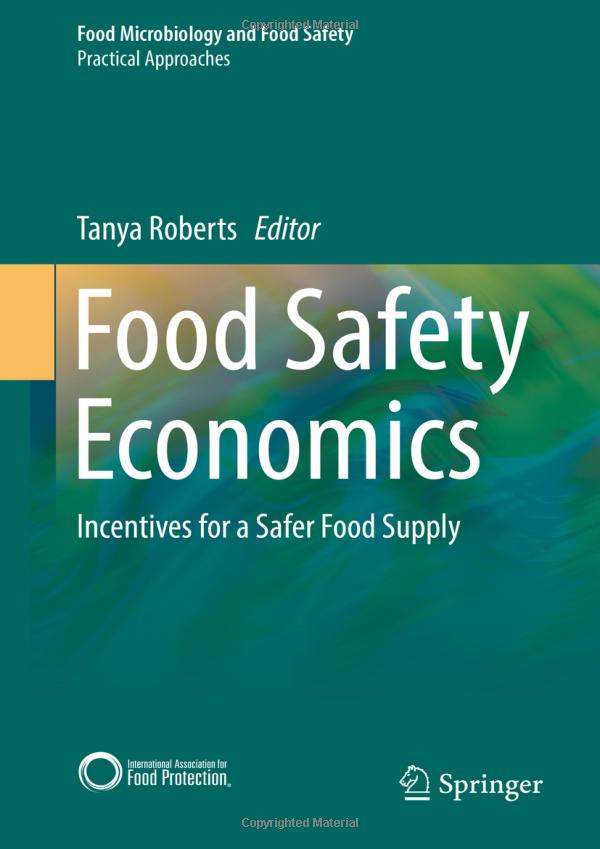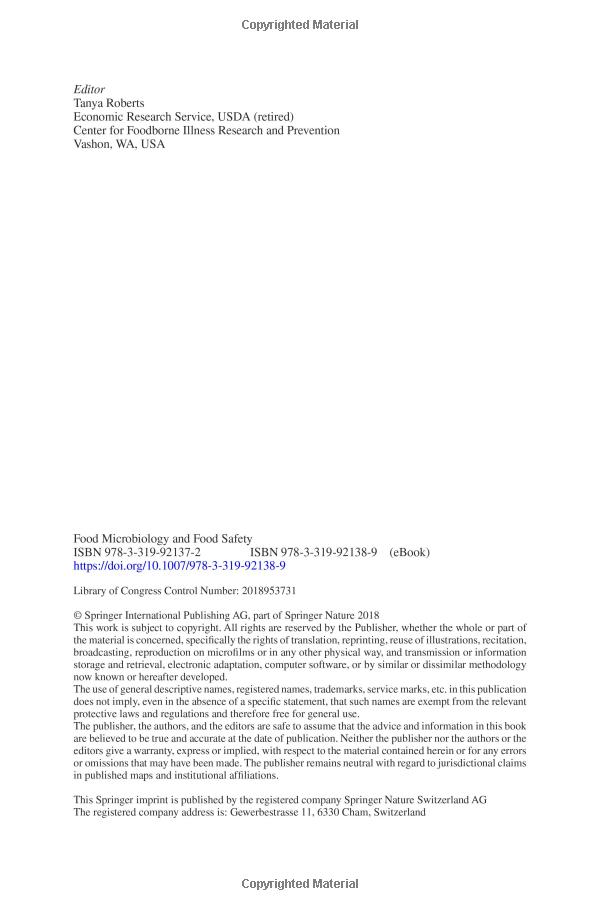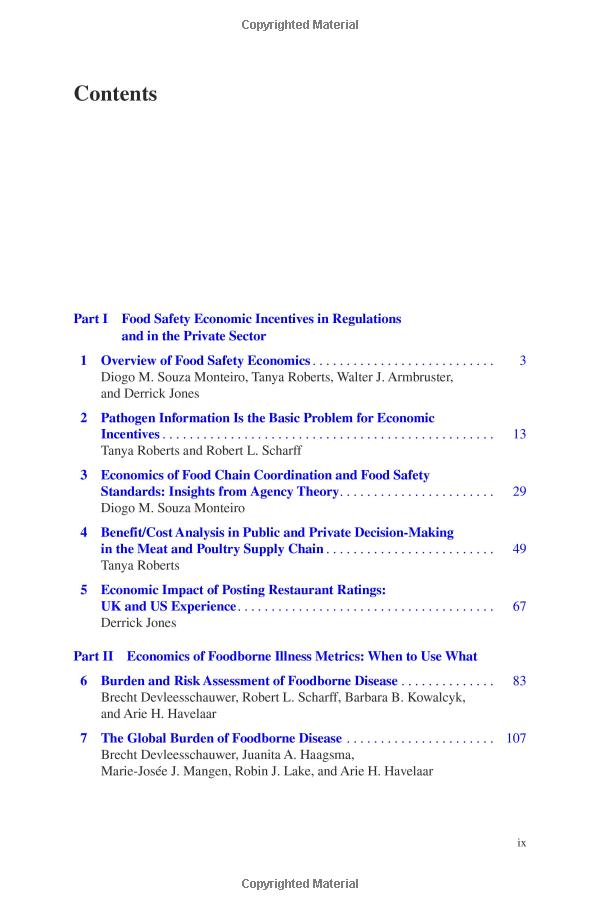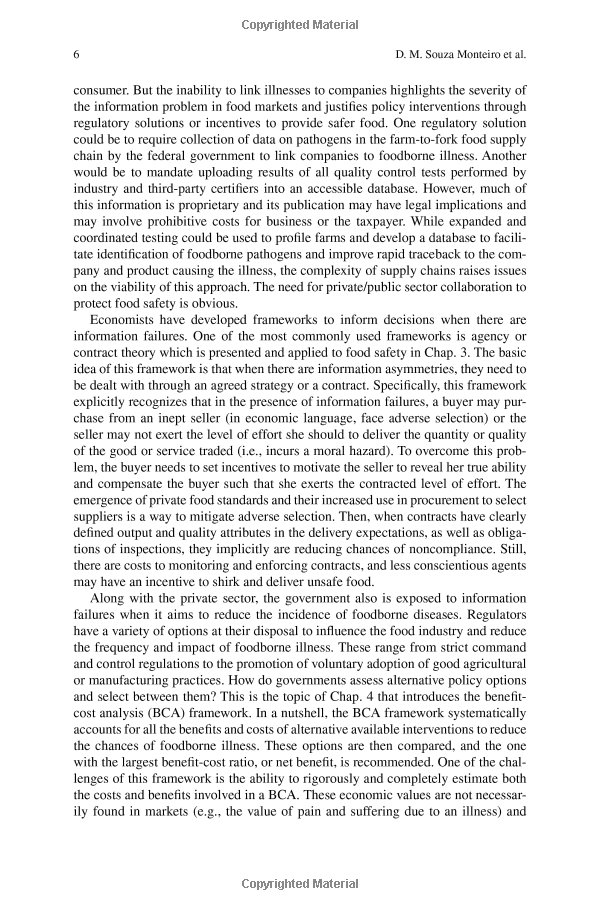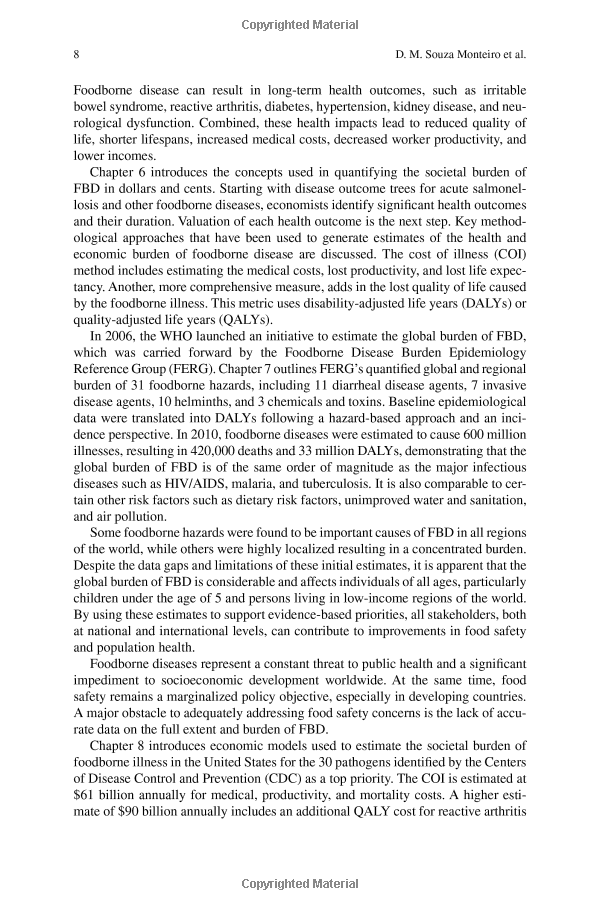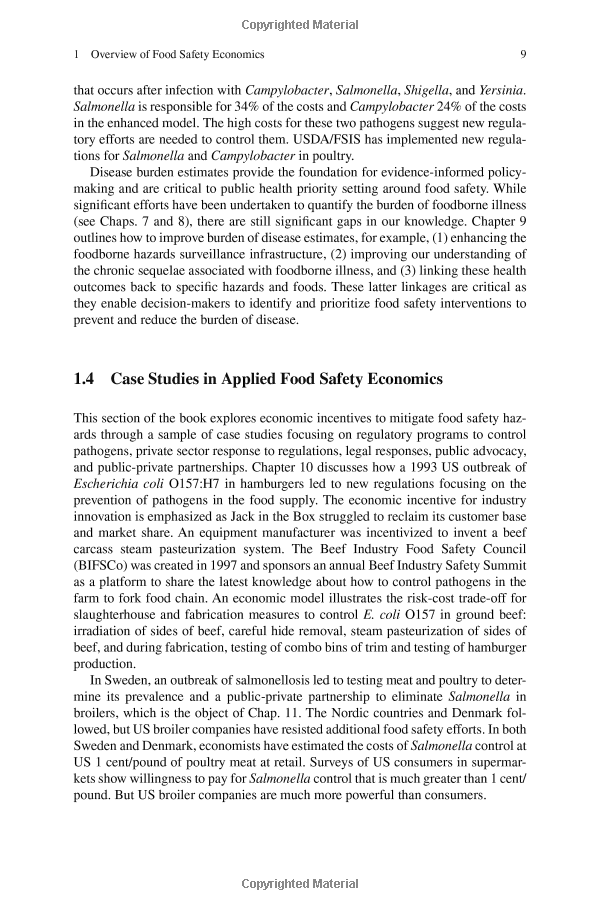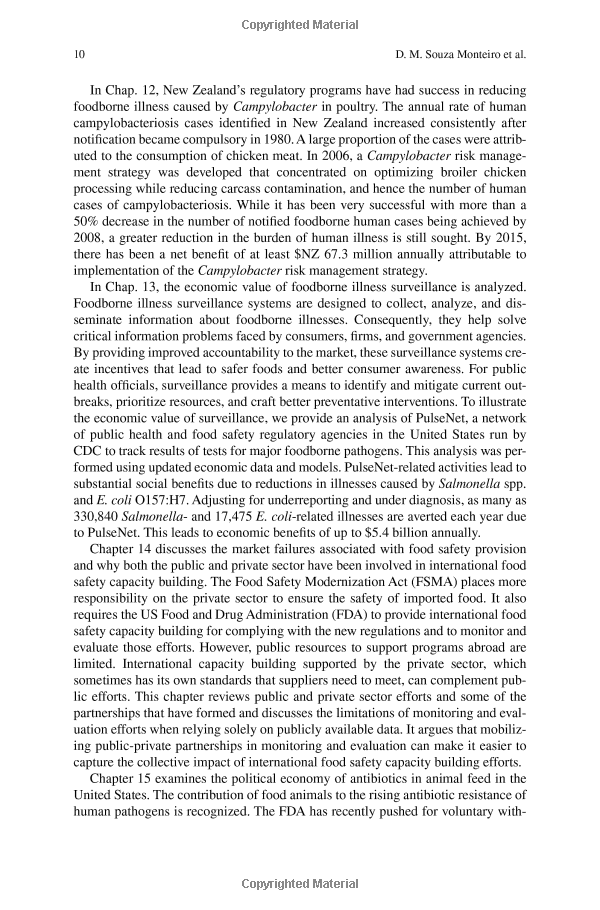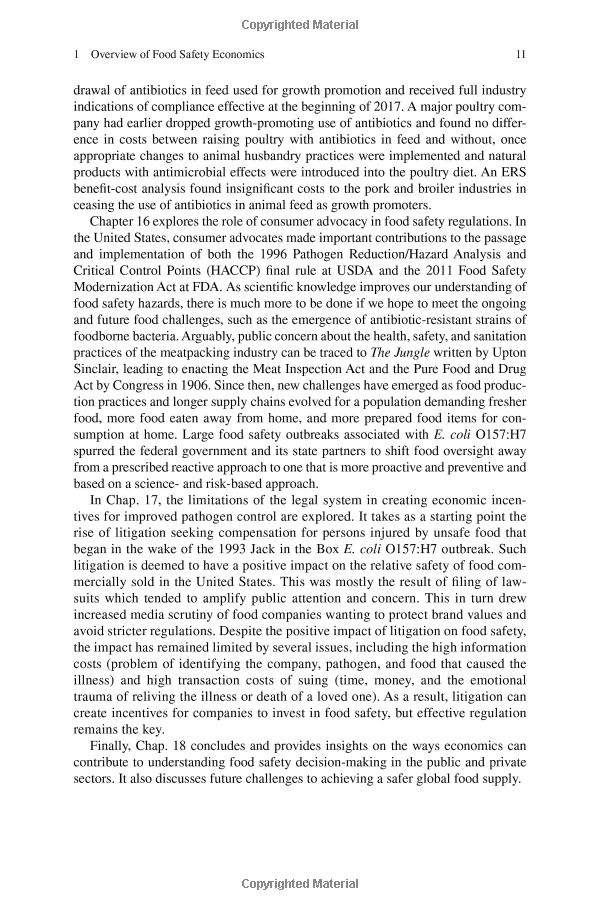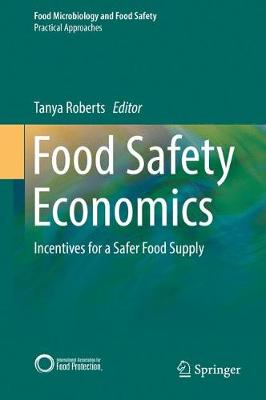
Food Safety Economics:Incentives for a Safer Food Supply(Practical Approaches)
食品安全经济学:适合更安全食品供应的激励措施
农业经济学
¥
2361.25
售 价:
¥
1889.00
优惠
平台大促 低至8折优惠
发货周期:外国库房发货,通常付款后3-5周到货
出版时间
2019年01月08日
装 帧
精装
页 码
411
语 种
英文
综合评分
暂无评分
- 图书详情
- 目次
- 买家须知
- 书评(0)
- 权威书评(0)
图书简介
This book examines the economic incentives for food safety in the private marketplace and how public actions have helped shape those incentives. Noted contributors analyze alternative public health protection efforts and the benefits and costs associated with these actions to understand:
why an excess of foodborne illness occurs
what policies have worked best
how regulations have evolved
what the path forward to better control of pathogens in the U.S. and the international food supply chain might look like
While the first third of the book builds an economic framework, the remaining chapters apply economics to specific food safety issues. Numerous chapters explore economic decision making within individual companies, revealing the trade-offs of the costs of food safety systems to comply with regulations vs. non-compliance which carries costs of possible penalties, reputation damage, legal liability suits, and sales reduction. Pathogen control costs are examined in both the short run and long run.
The book’s unique application of economic theory to food safety decision making in both the public and private sectors makes it a key resource for food safety professionals in academia, government, industry, and consumer groups around the world. In addition to Benefit/Cost Analysis and economic incentives, other economic concepts are applied to food safety supply chains, such as, principal-agent theory and the economics of information. Authors provide real world examples, from Farm-to-Fork, to showcase these economic concepts throughout the book.
本书暂无推荐
本书暂无推荐








